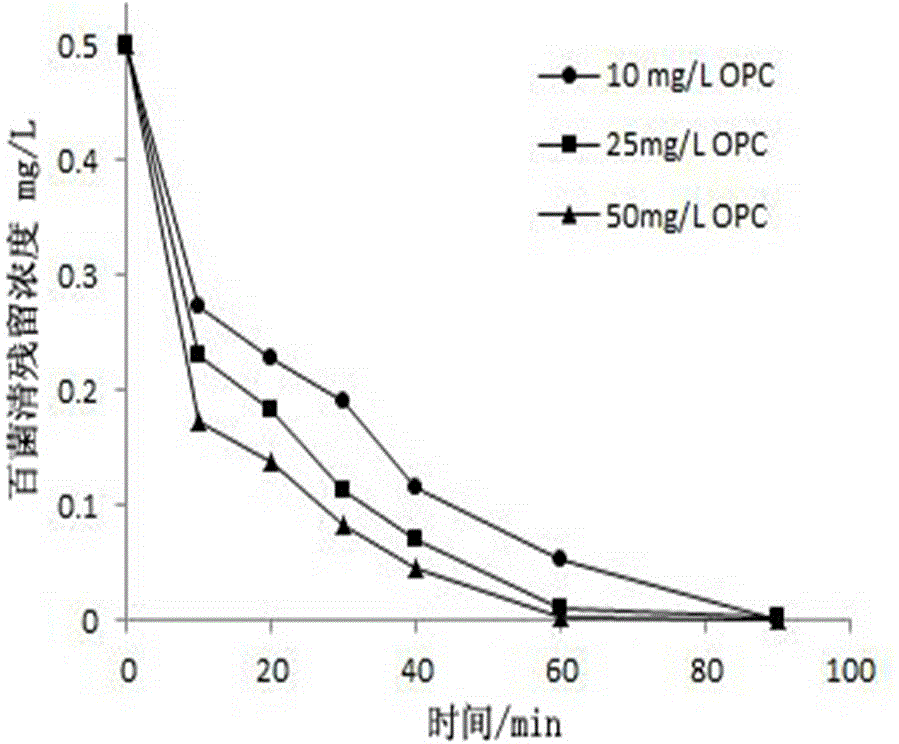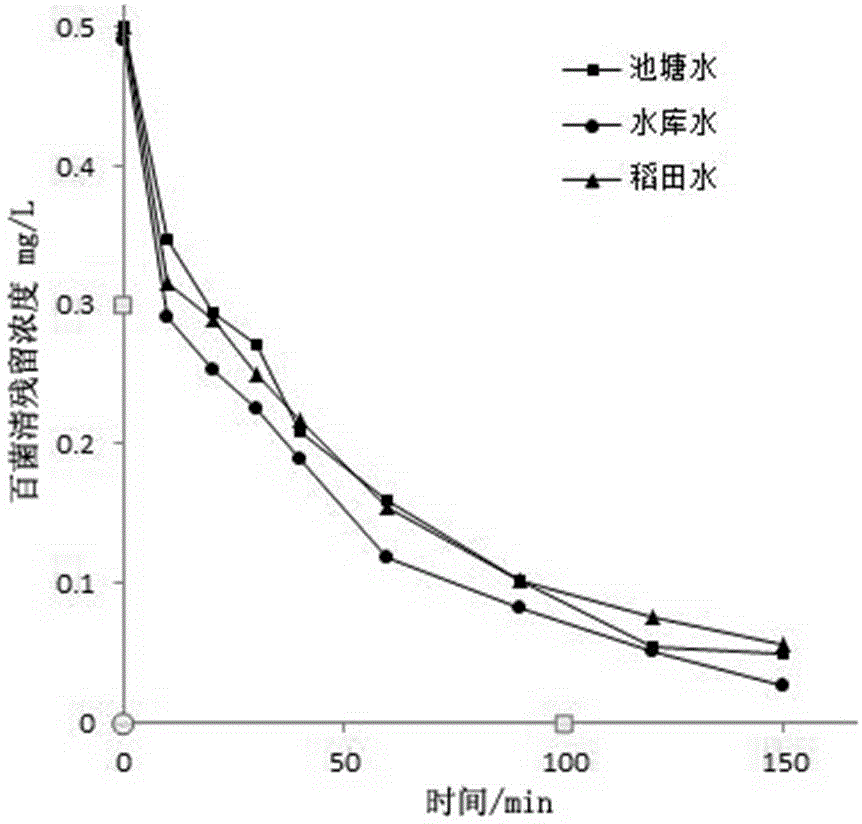Method for treating chlorothalonil in water by utilizing oligomeric proantho cyanidins extracted from natural plants
A technology of proanthocyanidins and natural plants, which is applied to the treatment of organic pollutants in water, chlorothalonil. Natural plant extracts of proanthocyanidins are used as chlorothalonil treatment agents in water bodies, which can solve the problems of inability to finally degrade chlorothalonil parent and high toxicity.
- Summary
- Abstract
- Description
- Claims
- Application Information
AI Technical Summary
Problems solved by technology
Method used
Image
Examples
Embodiment 1
[0026] Treatment of chlorothalonil in distilled water by proanthocyanidins under high pressure mercury lamp
[0027] 1. Use acetonitrile to make chlorothalonil standard solution with a concentration of 500.0 mg / L, and use methanol to make chlorothalonil standard solution with a concentration of 1000.0 mg / L, 2500 mg / L, and 5000.0 mg / L. Three kinds of proanthocyanidin standard solutions. Add 10.0 uL of chlorothalonil standard solution to four groups of quartz glass tubes, each group consists of three tubes; add 100.0 uL of proanthocyanidin standard solution with a concentration of 1000.0mg / L to the first group; 100.0 uL of proanthocyanidin standard solution with a concentration of 2500.0 mg / L; 100.0 uL of proanthocyanidin standard solution with a concentration of 5000.0 mg / L were added to the third group; the fourth group was a blank control group; Set the volume of the reaction system to 10mL to obtain three groups of light treatment solutions with the concentration ratios of ...
Embodiment 2
[0033] Treatment of chlorothalonil in natural water by proanthocyanidins under natural light irradiation
[0034] Three kinds of natural water from reservoirs, ponds and paddy fields in Hefei area were taken as the photolysis medium for the photolysis treatment unit for treating chlorothalonil in the water. Take 1L of the three kinds of natural water respectively in three glass beakers, and add 0.0005g chlorothalonil respectively Clear the standard product so that the concentration of chlorothalonil reaches 0.5 mg / L, and then add 10 mg proanthocyanidins respectively to make the concentration of proanthocyanidins reach 10 mg / L. The light source is sunlight (location: 31 degrees 52 minutes north latitude, 117 degrees 17 minutes east longitude), the light intensity is 84000lx-93000lx, and the outdoor temperature is 34°C when the light is on; See the effect of bacteria clear (0.5mg / L) figure 2 as shown, figure 2The middle ordinate is the concentration of chlorothalonil in water,...
PUM
 Login to View More
Login to View More Abstract
Description
Claims
Application Information
 Login to View More
Login to View More - R&D
- Intellectual Property
- Life Sciences
- Materials
- Tech Scout
- Unparalleled Data Quality
- Higher Quality Content
- 60% Fewer Hallucinations
Browse by: Latest US Patents, China's latest patents, Technical Efficacy Thesaurus, Application Domain, Technology Topic, Popular Technical Reports.
© 2025 PatSnap. All rights reserved.Legal|Privacy policy|Modern Slavery Act Transparency Statement|Sitemap|About US| Contact US: help@patsnap.com



